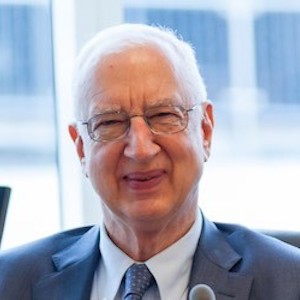By Judge Paul Michel
Many politicians assume that the key to successful innovation is government research funding — the more, the better. The reality, however, is more complex.
A successful scientific discovery in the lab isn’t the end of the invention process. It’s only the beginning.
Once basic research is completed, the long, difficult and expensive process of converting upstream discoveries into useful products begins. This conversion stage is funded largely by private investments, which outpace government research spending by at least threefold.
Our innovation system was long the global model. However, more recently, incentives supporting private-sector investment in commercializing new discoveries have been slipping. Patents used to provide adequate incentives, but they no longer do.
What went wrong? In a nutshell, U.S. patent protections have greatly weakened in the new millennium. The primary culprits are federal judges, particularly the U.S. Supreme Court.
For example, in several high-profile cases involving human health, the high court shrank the pool of inventions eligible for patenting.
In one case known as Mayo Collective Services v. Prometheus Laboratories, the court held that many diagnostic tests and methods for optimizing drug dosage can’t be patented. Similarly, the Court’s decision in Association for Molecular Pathology v. Myriad Genetics, Inc. held that naturally-occurring gene sequences generally can’t be patented, even if they are characterized, isolated and replicated for use in cutting-edge gene therapies or diagnostics. Two other decisions, known as Bilski v. Kappos and Alice v. CLS Bank, shrank eligibility for ubiquitous computer-implemented technologies.
Another high court decision known as eBay Inc. v. MercExchange, L.L.C. made it harder for patent owners to stop patent thieves from manufacturing products that incorporate stolen IP. In many cases of proven patent infringement today, a monetary award, rather than injunctive relief, is the best patent owners can hope for.
These court rulings came out of the blue from justices who don’t fully understand how the patent system works in practice. The cumulative impact of these cases has driven incentives below the level venture capitalists and other investors can accept. That’s why innovation is lagging.
Meanwhile, as we have been taking actions that weaken patents, global rivals have been moving in the opposite direction. China, the European Union,, the UK, Japan, Korea and others have all revised their patent law, creating patent systems that are in many ways better than ours. There, eligibility is broader and clearer, and injunctions are routine, giving them competitive advantages over U.S. companies.
Because patent law is statutory, not constitutional, Congress can correct the problems created by the Court.
Two lawmakers that do understand the critical condition of the U.S. IP system are Sens. Chris Coons (D-DE) and Thom Tillis (R-NC). Reintroduction of Sen. Coons’s STRONGER Patents Act would effectively restore the presumption that injunctions are the appropriate remedy in cases of patent infringement. The senators were both cosponsors of the Patent Eligibility Restoration Act, which would correct the Supreme Court’s decisions in Mayo, Myriad, Bilski and Alice.
The genius of our innovation system is its dual reliance on public and private funding — incentives for scientific genius and entrepreneurial genius. Strong patents create strong investment incentives. Once Congress understands that, we can recover.
Paul Michel served on the United States Court of Appeals for the Federal Circuit from 1988 to his retirement in 2010, and as its chief judge from 2004 to 2010. He currently serves on the board of the Council for Innovation Promotion. This originally appeared in the Detroit News.




